HiFiMAN HM-601 Review
HiFiMAN HM-601
Tonight we're going to party like it's 2001, with this brick-like audiophile audio player.
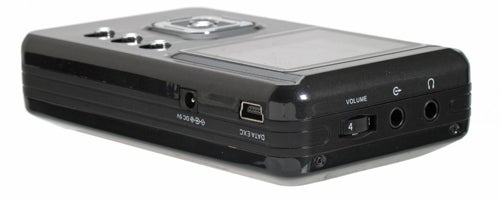
Verdict
Pros
- Warm, "analog" sound
- Decent built-in headphone amp
Cons
- Horrible navigation
- Ropey battery life
Key Specifications
- Review Price: £175.00
- Built-in headphone amp
- 3.5mm line out
- 5-band EQ
- 9-hour battery life
- SD card slot
In a world of MP3 players where the iPod is king, and all rivals have to scrabble at its feet for scraps, the HiFiMAN HM-601 doesn’t play by the rules. Bravely battling against the norm, it’s big, it’s bulky and it will only fit in your pocket because buying it will lessen the amount of notes and coins you need to carry around with you – it costs around £170 at today’s conversion rates. Yet it’s still a good choice for a small proportion of the population, because it sounds rather marvellous.
The HiFiMAN HM-601 looks like a device from another age. If you forget the colour screen for a second, you could easily fool yourself into thinking it was released back in 2001 alongside the Creative DAP Jukebox and first-gen iPod. If you remember those days, like us, it may hold a certain charm. But next to players like the Cowon J3 and Sony NWZ-A866, it can seem rather an anachronism.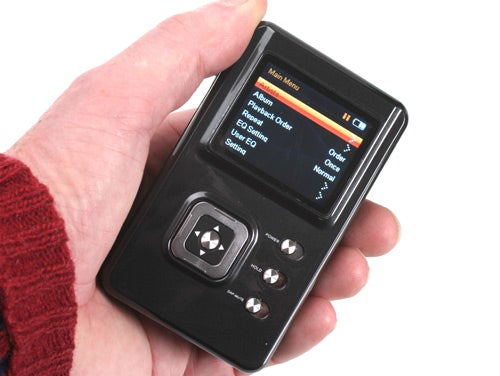
It’s made of gunmetal grey glossy plastic and is adorned with some industrial-style physical controls. There’s a 4-way navigational D-pad and three sliders, which act as the power switch, hold toggle and mute mode selector. They’re all made of plastic rather than metal, but have a solid action that’s rare in these days of touchscreen operation.
The plastic construction helps to keep the weight down too. At 26.5mm thick, the HM-601 is much chunkier than obvious rivals like the iPod Classic, but at 163g (according to our measurements although HiFiMAN claims a whopping 200g) it’s not much heavier than the opposition. 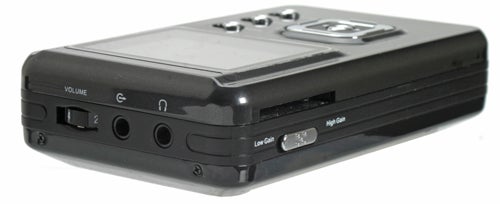
This very reasonable weight is partly down to the type of memory it uses. There’s just 8GB of internal storage, which is flash memory – rather than a hard drive zapped in from 2001. What makes this relatively small storage fine in our eyes is that the HM-601 offers a full-size SD card slot – that gaping hole on its left side. This lets you expand that 8GB by up to 32GB, giving a maximum storage potential of 40GB. Full-size SD cards are much handier to keep as a “library” of a larger music collection than their smaller relatives.
While microSDs are on the road to ubiquity, now featuring in the vast majority of phones, they’re horribly easy to lose, and horribly hard to effectively label. Keeping a small library of larger SD cards is a much more attractive proposition. Once again, the HM-601 has us brimming with retro nostalgia – keeping music on physical media, how quaint.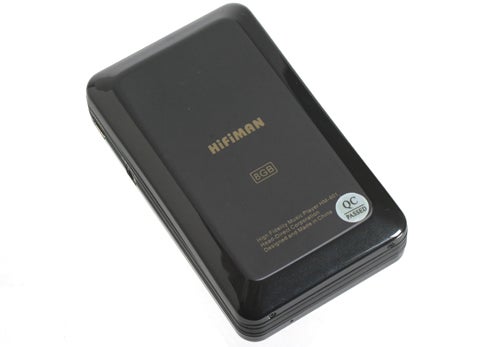
The volume control feels similarly antiquated, using a dial with numbers etched into it rather than any on-screen notification of the level. This is down to the internal circuitry of the HM-601 taking precedence over such flim-flam considerations as user interface, but like the crucial and highly unusual “low gain/high gain” switch by the SD slot, it’s a clue that this isn’t a player for folks teetering on the edge of buying an iPod Nano.
Another clue is the 3.5mm line-level output, which sits up top right next to the 3.5mm headphone jack. This gives you an additional audio output that circumvents the volume control – perfect for hooking up to a hi-fi, for example. It’s not so much an MP3 player as an “audio source”.
We’ve already roundly ribbed the HiFiMAN HM-601 for looking like something released 10 years ago, but perhaps more serious are its interface problems. Its looks are simple, its basic menu layout familiar, but navigating through it can feel like operating something through a mirror’s reflection, because the D-pad rarely behaves as expected.
For example – when in the “What’s playing now” view, you’d expect a right press to go to the next track, right? Wrong, it brings up a pop-up that lets you add the track to a favourites list. To go to the next track you press down.
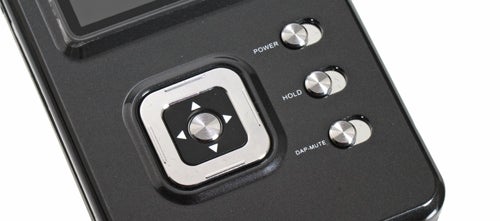
The HM-601 gets itself into these usability scrapes because it doggedly sticks to the principle that a left press on the pad should always flick between different menus (apart from the few odd occasions when it doesn’t, just to spice things up a bit). Once one control element is flip-reversed, a domino-like effect takes over that infects the whole interface. So, to edit EQ faders, you press left and right rather than up and down, and some of the time the select button in the middle of the D-pad will do nothing at all. Diddly. Squat.
When other players do just fine with a similar complement of buttons, it’s a wonder that HiFiMAN has managed to make everything feel so fiddly. Its navigational quirks are things you’ll get used to, but for a little while it does feel like learning a new language… that uses a different alphabet. In defence of the player, we experienced similar navigational face-palm moments in Cowon’s J3 and X7 players too – perhaps it’s all part of being an audiophile-oriented player. Just like needing to have 300 hours of publically sneering about the MP3 codec to get your audiophile club card.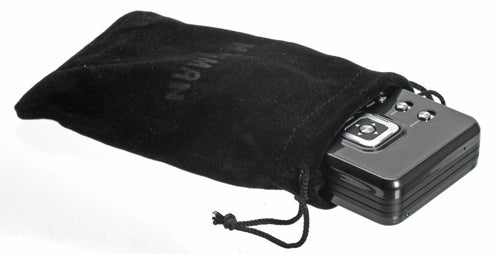
Once you’ve passed the unintuitiveness test and earned your HM-601 interface license, the menu structure is actually dead simple. As it’s not a feature-packed device, everything of note can be shoved into one main menu without it seeming overcrowded.
You can rifle through your audio library by Artist or Album, change EQ settings, activate the shuffle and repeat settings – but that’s about it. There’s no radio, no audio recording and – it goes without saying, but – no Wi-Fi, no apps and no games. The screen is basic too. It’s colour, but doesn’t display album art and suffers from both colour and contrast shift when viewed from an angle. A text-only approach keeps things clear, but it’s not pretty.

The HM-601 is not sold on its features though, rather its audio quality – and in that argument, a lack of features can be sold as a positive, the unadulterated nature of the internal circuitry resulting in less interference. How much you believe in the realities of such claims is up to you.
It does, however, play more audio codecs than several top audio players, including the Sony NWZ-A866 and iPod Classic. On top of MP3s, it will play the high-end OGG as well as the lossless FLAC and APE codecs. Some reports online suggest it struggles to pick up some specific codec configurations, but we didn’t experience any problems. Files from SD cards are integrated into the main library too, using the files’ ID3 tags – an important usability win (or at least non-fail) for the HM-601.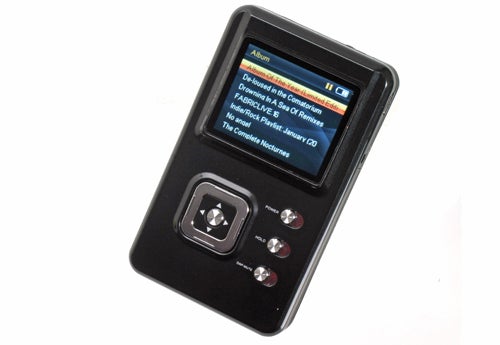
After having learnt to live with the player’s dysfunctional ways, it continues to demand patience. Against “modern” devices, the HM-601’s 9-hour battery life seems rather ridiculous given its size – the Cowon J3 lasts for around 45 hours, the iPod Classic around 40. It takes an age to charge too. In summary, this device is horribly impractical in a number of ways. This alone should be enough to turn off most looking for a decent MP3 player. It does, however, make up some of the lost ground with its sound quality.
The HiFiMAN HM-601 features some fairly serious components under its dumpy, shiny plastic exterior. It has a TDA1543 DAC, generally considered an “oldie but a goodie”, and a “proper” headphone amp – offering more power than something like the Fiio E6. HiFiMAN claims that it will be able to power the majority of full-size headphones – a claim it’s understandably careful about given how power-hungry headphones like the HiFiMAN HE5 are.
The sound isn’t neutral and completely uncoloured, but these days you can get such a signature from a competent, cheap player. You don’t need to spend megabucks to get decent sound quality. What the HM-601 does bring, though, is a lovely warm, “analogue-style” sensibility to music, whether in its high or low gain setting.
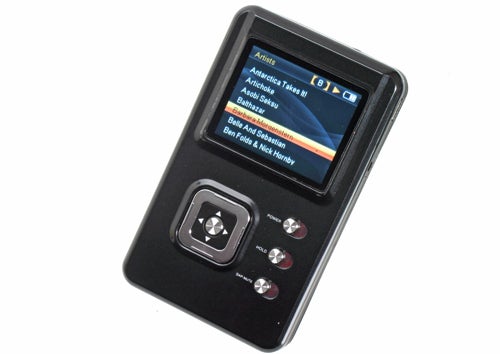
It’s not a particularly bright, insightful-sounding player, but it is a joy to listen to, and can help curtail sibilance and harshness. However, there’s only a very basic equaliser built-in, giving you /-10 control over five frequency bands, tagged 60Hz, 300Hz, 1kHz, 3kHz and 6kHz.
The level of control this supplies has nothing on the system employed by the Cowon J3, another great-sounding player available at a similar price, but the effects of EQ edits sound very good – avoiding the distortion and ugliness less proficient equalisation brings. We found it particularly handy to add a little top-end brightness, as the HM-601 can sound a tiny bit rolled-off at the top of the frequency spectrum at times.
However, we find it hard to justify the massive compromises inherent in using this device, against a friendlier, smaller, longer-lasting player unless you can make real use of its headphone amplifier. If you use IEM earphones, we think you’re much better off with something else – and even with over-ears headphones you don’t necessarily need a headphone amp to make the most of them.
One way to tell – although by no means a conclusive test – is to find out your headphones’ impedance. Around 300 Ohms suggests you could do with an amp – 30? Not so much.
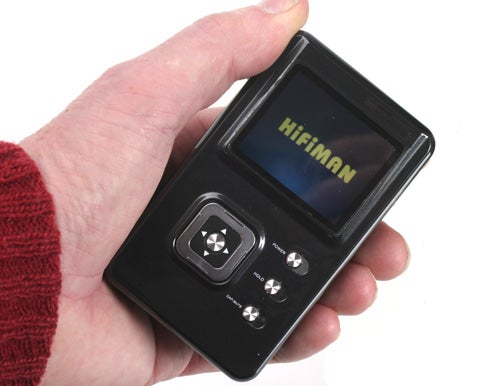
If you’re only just starting out with more expensive audio equipment, and have only started haemorrhaging your financial veins rather than arteries, you’ll find a much greater difference in sound quality by buying a decent set of headphones or earphones, rather than a high-end audio player like this.
Digital music makes it fairly easy for a budget player to sound pretty good – and those 10 years of progress we’ve referenced a number of times at the HM-601’s expense have really helped. It’s not that it’s hideously expensive – £170 really isn’t for a good player, but there are so many options that are so much easier to live with. The simplified circuitry of the HiFiMAN even means it’s susceptible to mobile phone interference – something we thought we’d waved goodbye to a long time ago.
The Cowon J3 and Sony NWZ-E454 are both good options, and while the Apple iPod Classic may not be considered the last word in sound quality, its latest iteration is a good, clean performer and offers 160GB storage for just £20-30 more. Oh, and an interface that certainly won’t put you off actually listening to music.
Verdict
Our relationship with the HiFiMAN HM-601 is a conflicted one. We love it and hate it, at the same time. It’s a pain to use, the battery life is mediocre and the behaviour of the navigational D-pad wills you to throw the thing out of the window. And yet it sounds great and has enough power to deal with demanding headphones most media players can’t do justice to, without a headphone amp. If you have such a demanding pair, this player’s worth searching out. The rest of us should probably stay a little nearer the mouth of the deep, dark “audiophile” cave.
Trusted Score
Score in detail
-
Design 6
-
Sound Quality 9
-
Features 6
-
Value 6
-
Usability 3
Storage
| Internal Storage (Gigabyte) | 8GB |
| Total Expanded Capacity (Gigabyte) | 40GB |
Battery Life
| Audio | 9-10 |
General Features
| Microphone | No |
| Speaker | No |
Audio Codecs
| MP3 | Yes |
| Apple Lossless | No |
| AIFF | No |
| AAX | No |
| WAV | Yes |
| AAC | No |
Physical Specifications
| Weight (Gram) | 0.163g |


